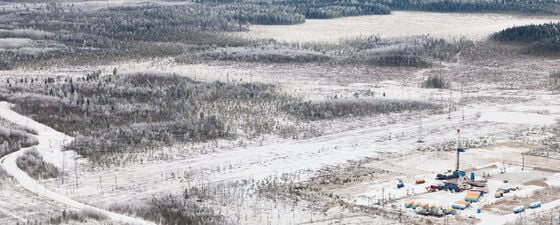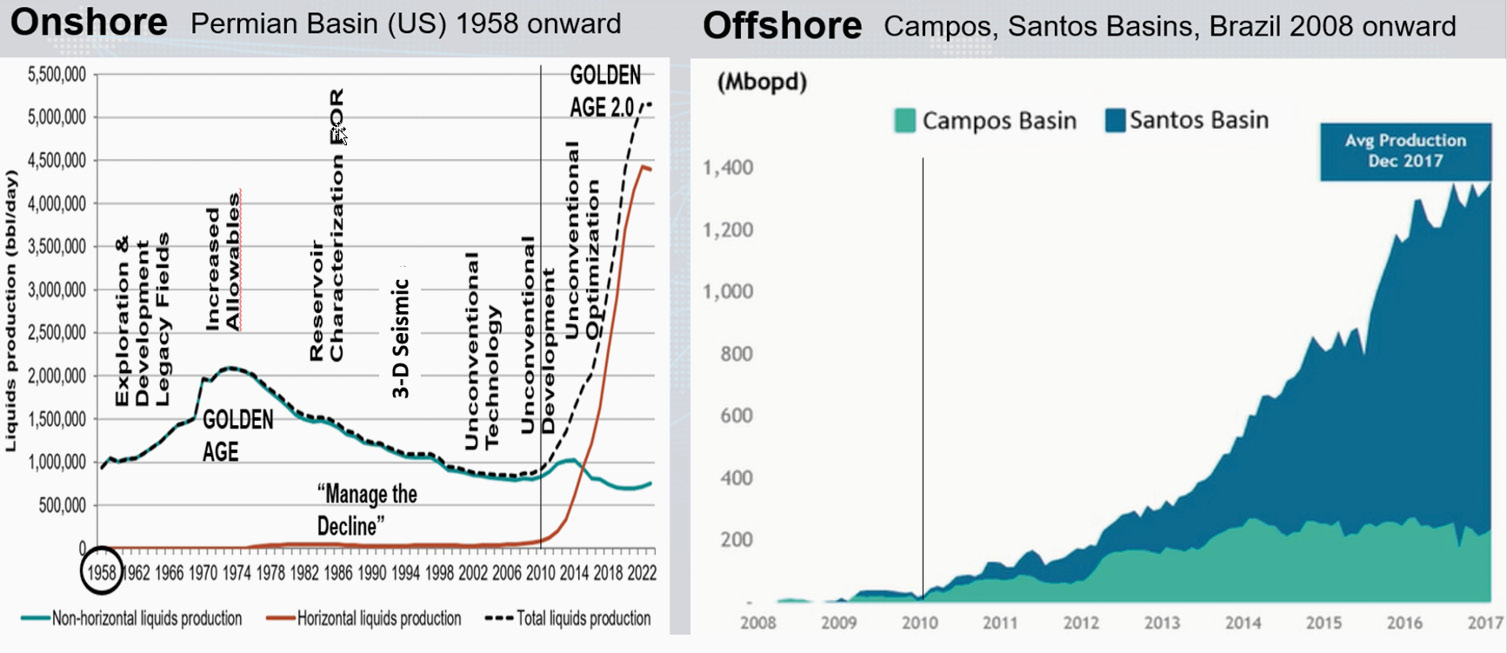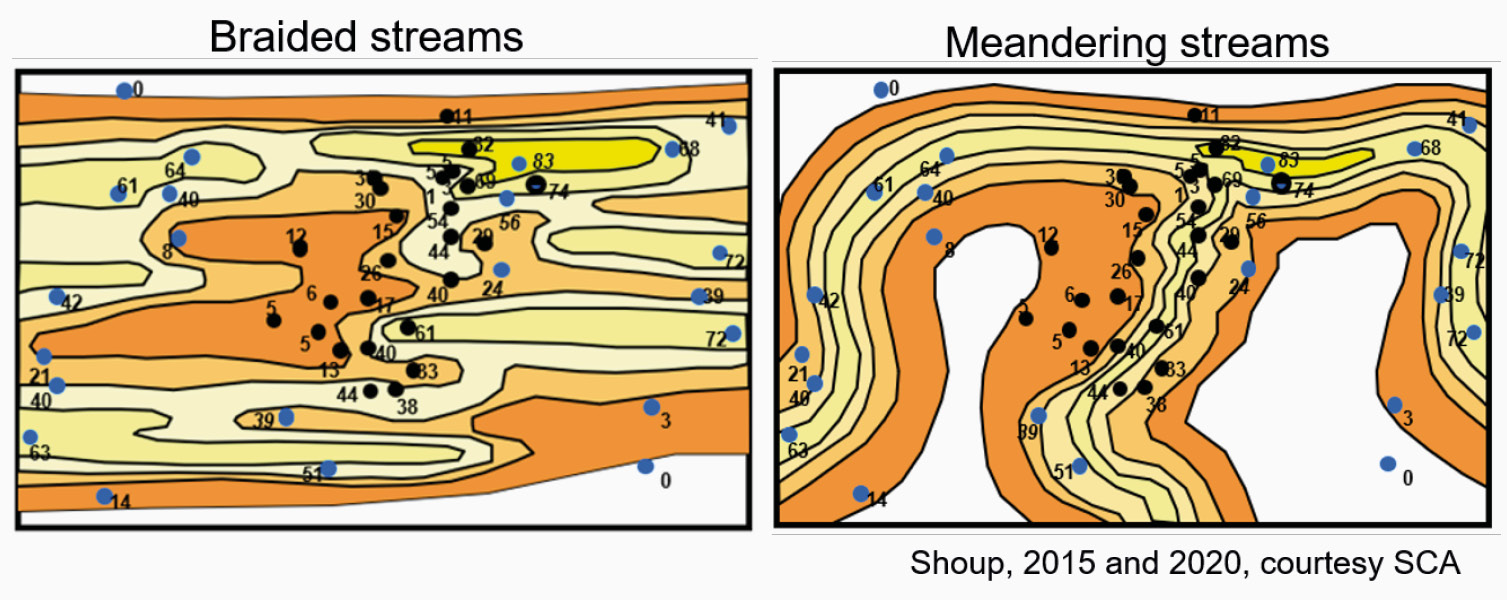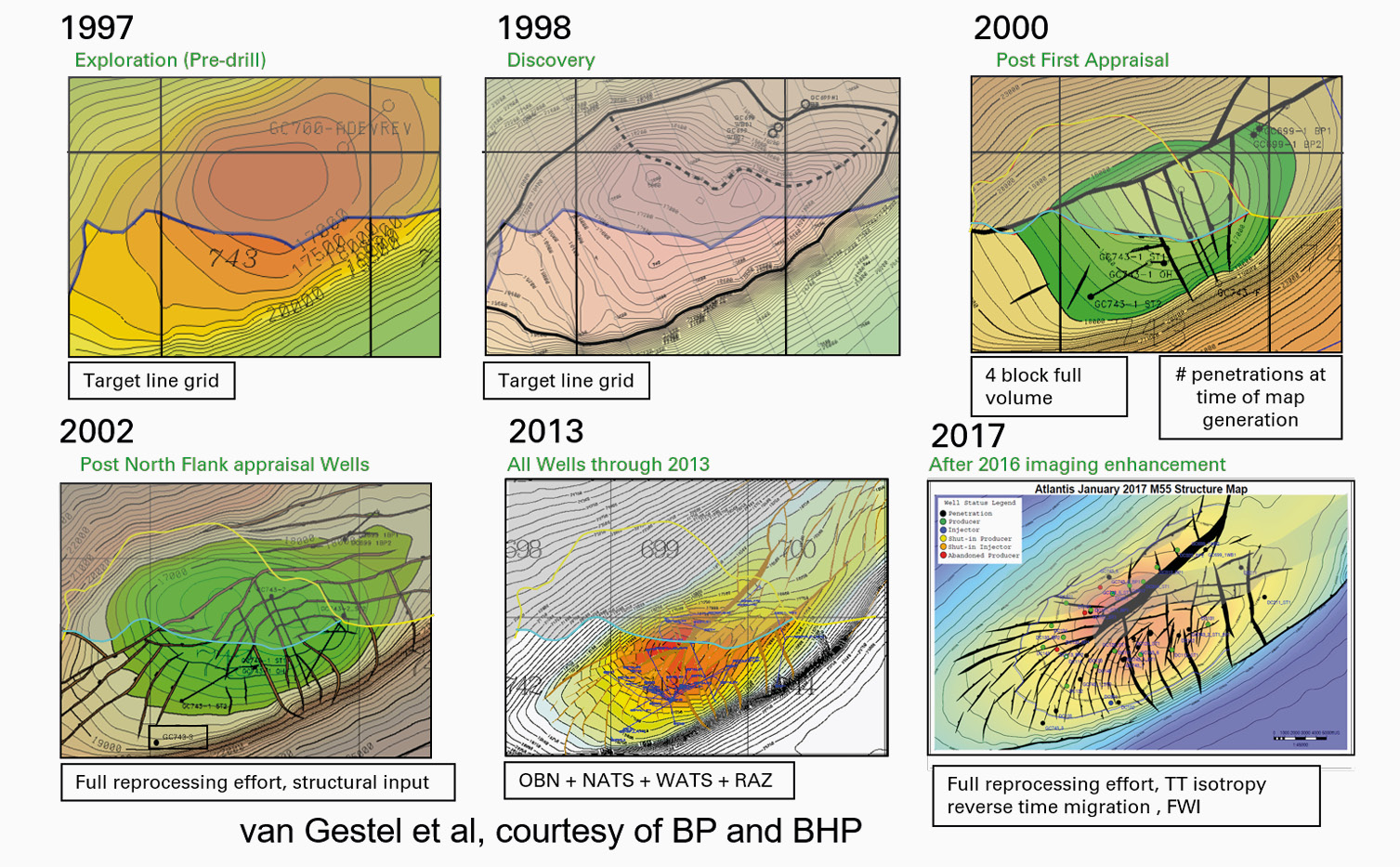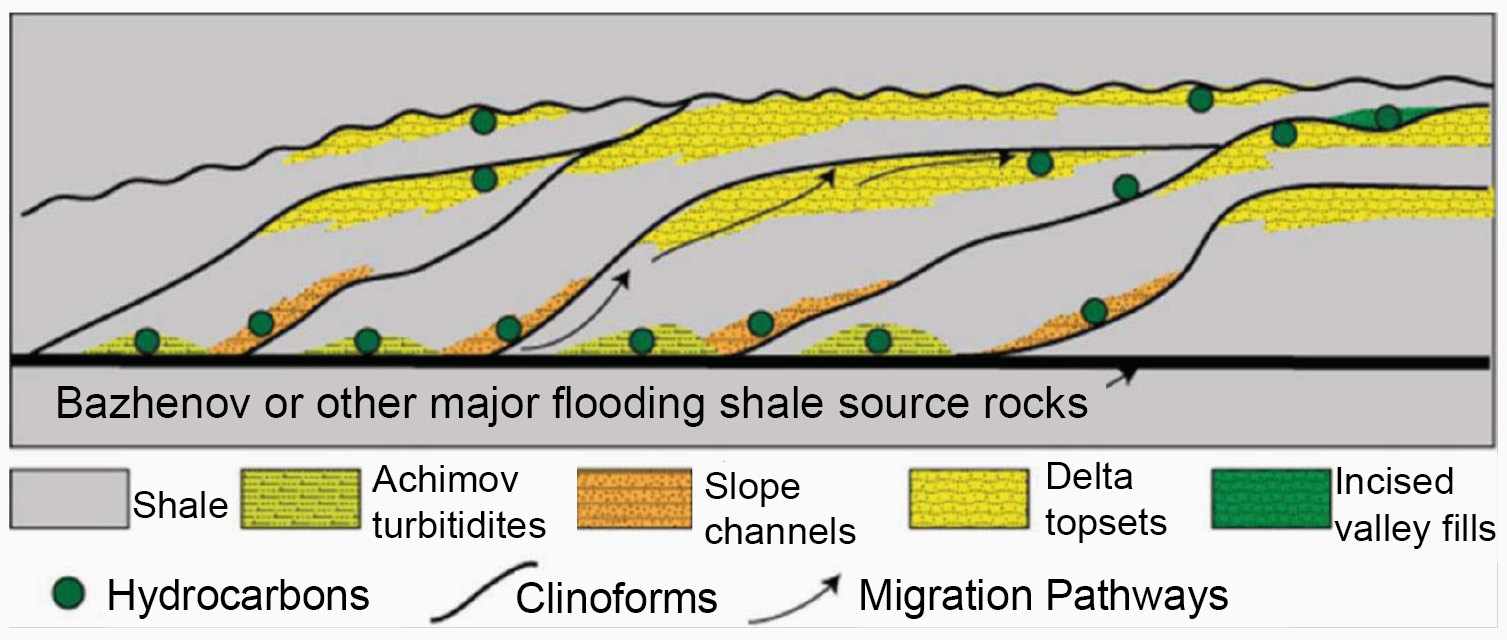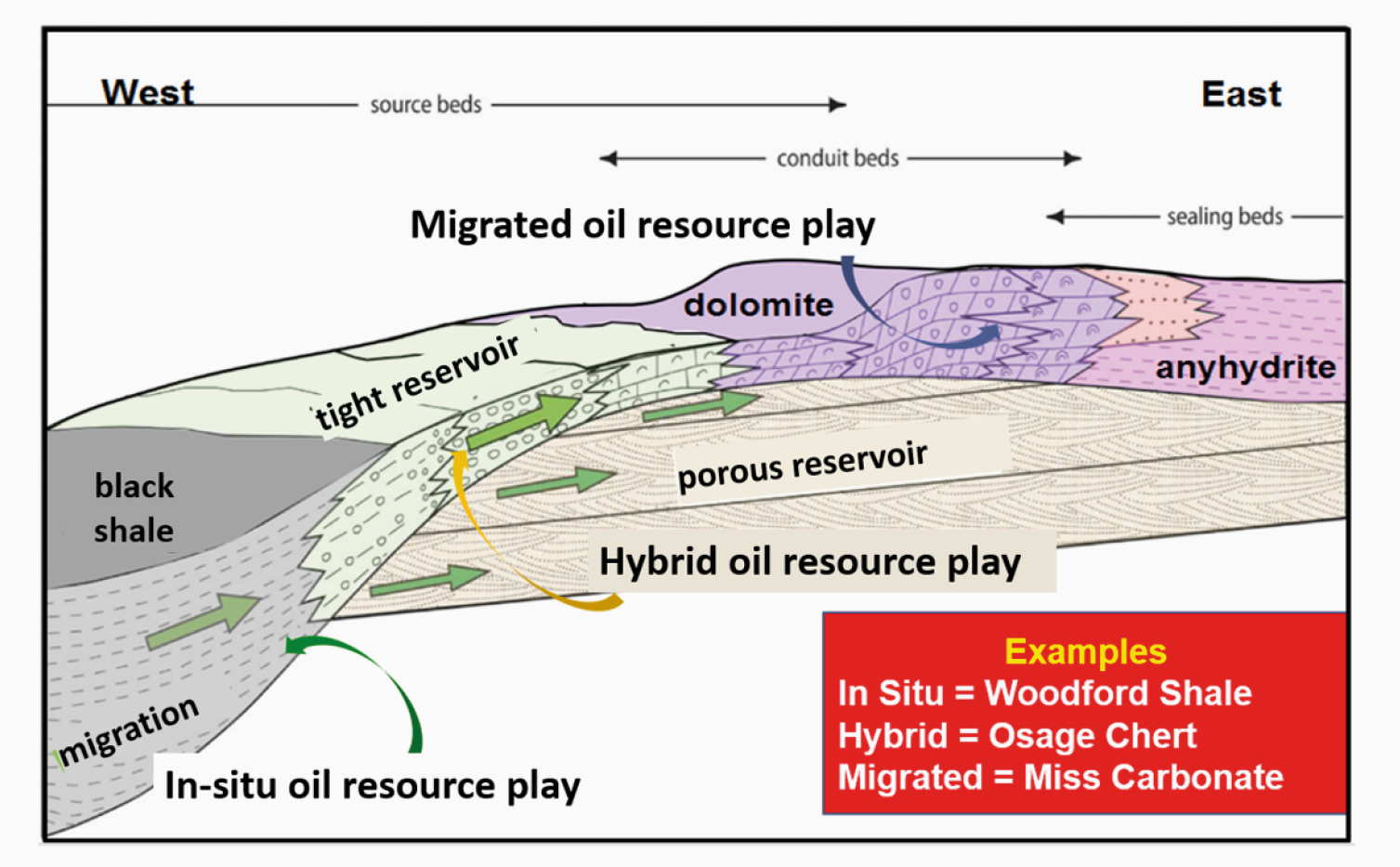The foundations underlying the business of finding and producing oil and gas are basins and plays: they define where we work and many of our workflows. Whatever we do in the exploration process, we need to have a vision of where we fit in and how our work leads to the prize of an informed and successful drilling decision.
Super basins can be used to help us do just that. ‘Super basin thinking’ is an overview of the methodologies used to find and produce more hydrocarbons from the world’s greatest petroleum basins.
As discussed in GEO ExPro Vol. 16, No. 5 and defined by Fryklund and Stark (2016), a super basin is “an established basin with at least 5 Bboe produced and at least the same volume of recoverable remaining reserves; two or more petroleum systems or source rocks; stacked reservoirs; existing infrastructure and oil field services; and good access to markets”.
Super basins are not only a great place to find oil and gas; they are also excellent for anyone actively looking for hydrocarbons to learn more about their own area by seeking analogues through them. Reading widely is the best way to find an analogue to a basin and by immersing themselves in all the detail of analogue basins, geoscientists will quickly find new actionable ideas that they can test and apply to their own basins. To fuel our creativity, it is important to study as many basins as we can and to learn from the experts in each basin (Sternbach, AAPG Presentation 2018).
Technology – The Game Changer in Oil & Gas Exploration
New technology has been the game changer that has converted already great basins into super basins, and has already revealed an estimated 860 Bboe of technically recoverable reserves waiting to be found in them (Fryklund and Stark, IHS Markit, AAPG presentation 2017).
Take, for example, a mature basin like the Permian Basin in the US. Having started producing before 1958, by the beginning of the 21st century the basin was in decline. Managing that decline was the order of the day, using what were then new technologies, such as reservoir characterisation, enhanced oil recovery and 3D seismic. With the development of horizontal drilling and fracturing and other technologies associated with unconventional exploration, however, a whole range of untapped reserves were released, and the basin is now producing more than ever before.
Technological innovation tends to happen in times of low oil prices – so it is good to remember that we are enjoying a time of peak innovation right now. Developments in engineering, like drilling further and in deeper water; in geophysics to reveal long hidden reservoirs; and exciting advances in geochemistry, all help increase our success rate.
The US Gulf of Mexico is another long-established producing basin – but for many years some of the best reservoirs were hidden, until improvements in geophysical imaging allowed us to see through thick layers of salt. Similar examples can be found in Mexico, Brazil and West Africa, all revealed by enhanced seismic imaging enabling us to visualise this previously hidden world.
Other recent developments include ocean bottom seismic and full waveform inversion, which together have produced a step change in imaging, allowing for enhanced fault identification and reflector continuity and enabling us to make better depth ties to wells and target new wells more accurately.
Geomodelling and big data have played a useful part in super basin exploration, but it is important to remember that the human mind is always needed to confirm the interpretation. We need to understand whether something in the super basin analogue can relate to a feature in the depositional model for our own area and then use our creative minds to guide the data, rather than just rely on the model output. As the example below shows, you cannot just contour the data – you need to interact with it.
Super Sources Fuel Super Basins
Some of the world’s richest source rocks are responsible for the hydrocarbons in super basins throughout the world, including formations like the Marcellus in the Appalachian Basin, the Kimmeridgian in the North Sea, the La Luna in South America and the Tannezuft in North Africa. But with such prolific sources, it is easy to overlook hidden or deeper potential sources that are not explored, even when there has been a ‘whisper’ in the geochemical analysis that another source rock may be responsible for some of the oil and gas. In some super basins this has indeed been the case, with several Devonian and Cambrian formations proved to be sources in the Appalachian Basin, sources older than the Cretaceous La Luna being found in South America, and many Permian to Devonian sources have been found to underlie the Jurassic Kimmeridgian in the North Sea.
For many years we only looked for oil in reservoir beds, into which it had migrated and been trapped, ignoring the potential of both the rocks in which the oil had originally been formed, and also those through which it had travelled. By extrapolating from super basins where hydrocarbons have been found in these in-situ rocks, such as shale plays, and in hybrid situations, maybe more can be found in other established basins. This is particularly relevant where there has been a late tilting episode, as seen, for example, in the Permian Basin, and although this can allow fresh water to flush oil through the migration beds, some oil will be left behind, to be extracted using established unconventional exploration techniques.
Another example is the Western Canada Basin, where much of the oil production has been focused on the oil sands exposed at the surface but where residual hydrocarbons have been retained in the Devonian migration carrier bed, obtainable with horizontal drilling and hydraulic fracturing.
From Source to Sink
As we all know, to understand sedimentology we need to understand first where the sediments originate, and then how and where they end up in the basin. The richest fields are those that have the highest concentration of hydrocarbons, as they can be developed with fewer wells. There has been a lot of work recently on fan distribution in super basins, which can give ideas about underexplored areas; for example, there are a number of sub-basins in the Chicontepec Basin in Mexico that have very similar sediment fans to those of the prolific Spraberry Formation in West Texas. The area is virtually undrilled, demonstrating the huge potential a good analogue can suggest (Cheatwood and Guzman, 2002).
Studying the source-to-sink depositional systems of super basins reveals how important clinoforms are in understanding petroleum potential. They can produce in many different ways, from the toeset beds, as in the Bakken play, and the Vaca Muerta bottomset, to the clinoforms themselves, seen in the Anadarko Basin. The West Siberian Basin source rock is so prolific that hydrocarbons are found throughout the profile, from basal sediments through the clinoform to the topset. So, look at analogues to whatever basin you are working in and think about all the ways clinoforms can produce.
Similarly, keep looking for analogues to those elusive stratigraphic traps that have proved so productive in many super basins. The number of discoveries in these traps has increased hugely in recent years, helped by enhanced seismic imaging. Both the Permian and the West Siberian, though apparently simple basins, proved prolific. Their success relies on a lightly structurally deformed basin architecture that features multiple prolific source rocks deep in the sedimentary section and abundant reservoirs, many with clinoforms. A regional topseal is the icing on the cake. To make matters more interesting, as seen in the US Permian Basin, a late uplift on one side of the basin can introduce hydrodynamic flow, creating tilted oil water levels and creating large reserves of residual oil zones that await enhanced oil recovery.
Analogues to the Appalachian and Western Canada compressional fold and thrust belts can be found throughout the world. In these systems the key rich source rock is heavily deformed and set within the thrust belt but the reservoirs are in the less structurally complex undeformed area. Hydrocarbons have migrated via overpressured channels and reservoirs between the two, and these intermediate beds may still hold considerable reserves.
Fulfilling Potential
E&P workflows have changed over the years, and are now split into what we can describe as short or long cycles. Short cycle workflows, which are mostly in the unconventional plays, are action-oriented; one can drill as many as 100 wells in a single year, which does not leave the geoscientist much time to spend on thinking or research. The long cycle, as epitomised by deepwater exploration, can take up to ten years to evolve from prospect identification to first oil. They are very different – but every geoscientist should experience both and work in as many super basins as possible, as what you learn from one you will carry with you to the next. Creative thinking brought from one basin can lead to success in the other. Even if a company is working in a single basin, it is important to learn from others in order to enhance your thinking.
Super basins have been found to have many commonalities (Fryklund and Stark, in press, AAPG 2020, special Super Basins issue, and Sternbach, in press, same issue). They tend to have a simple deformation history, with an early structural phase followed by a later phase of infill that serves as a really effective seal. What steps are needed, then, to take these observations on super basins and move from understanding and analysis to creative thinking and long-term strategy? How can geoscience attributes like structural setting and source, timing, reservoir, and seal architectures anticipate future energy? How can super basins fulfil their potential in the most efficient manner? These questions require many perspectives, coming from businesses of various levels of capitalisation, national oil companies, the service sector, individual geoscientists and organisations like the AAPG.
Analogues are vital in this learning process. By comparing and contrasting different basins we gather insights quickly. Geoscientists play a key role in identifying new reserves and as they study each super basin and share the knowledge they will help the world to have abundant and affordable energy for a long time to come.
Continuing to learn and study these basins fuels our creativity, and that is the most important energy source we have.
References
- AAPG Website, 2020, https://www.aapg.org/events/conferences/superbasins.
- Bartolini, C., and Sternbach, C.A., in press, Super Basins: Selected Case studies of the World’s Greatest Petroleum Basins, Introduction, AAPG Special Issue for the Bulletin.
- Cheatwood, C.J., and Guzman, A.E., 2002, Comparison of Reservoir Properties and Development History: Spraberry Trend Field, West Texas and Chicontepec Field, Mexico, SPE 74407.
- Fryklund, R. and Stark, P, 2020, Super basins- new paradigm for oil and gas supply, AAPG Bulletin, in press.
- Fryklund, R., 2018; Super Basin Presentation, AAPG Global Super Basins Leadership Forum. https://www.aapg.org/videos/super-basins/Articleid/47856/bob-fryklund-keynote-why-super-basins
- Hafizov, S., Dolson, J.C., Pemberton, G., Didenko, I., Burova, L. Nizyaeva, I., Medvedev, A., 2014, Seismic and Core-Based Reservoir Characterization, the Giant Priobskoye Field, West Siberia, Russia, Search and Discovery Article #20269, http://www.searchanddiscovery.com/pdfz/documents/2014/20269dolson/ndx_dolson.pdf.html
- Hough, G.A., and Breyer, J.A. [2019]. Carrier beds as unconventional reservoirs. Gussow Conference paper, CSPG, 5.
- Merrill, R.K. and Sternbach, C.A., 2017, The AAPG Century—Giant Fields through the decades, AAPG Search and Discovery article #70267, http://www.searchanddiscovery.com/documents/2017/70267merrill/ndx_merrill.pdf.
- Shoup, R.C., 2015, The 10 Habits of Highly Successful Oil Finders, AAPG Playmakers, Houston, AAPG Search and Discovery # 90229, http://www.searchanddiscovery.com/abstracts/pdf/2015/90229playmaker/abstracts/ndx_tearpock.pdf .
- Sternbach, C.A., 2018. AAPG Super Basin Initiative, American Association of Petroleum Geologists Bulletin, volume 102, vii-viii, DOI:10.1306/pn010818
- Sternbach, C.A., in press, Super Basin Thinking: Methods to Explore and Revitalize the World’s Greatest Petroleum Basins, in Bartolini, C. and Sternbach, C.A., editors, 2020, Super Basins: Selected Case Studies of the World’s Greatest Petroleum Basins, AAPG Bulletin Special Issue, in press
- Sternbach, CA, Merrill, R.K. and Dolson, J., in press, Habitat of Giant Fields, in Sternbach, CA, Merrill, R.K. and Dolson, J., editors, Giant Fields of the Decade 2010-2020, AAPG Memoir.
- Van Gestel, J.–P., C. Steiner, and T. Doré, 2019, Atlantis—Finding a field within a field: GeoGulf Transactions, v. 69, p. 653–654.
- Whaley, J., 2019, Petroleum Geology: What is a Super Basin? GEO ExPro, v. 16, p. 4.
Further Reading on Petroleum Super Basins
Petroleum Geology: What is a Super Basin?
Jane Whaley
There is a trend away from frontier oil and gas exploration towards finding more in less risky proven basins, fuelled by learning gleaned from studying the most successful petroleum basins in the world.
This article appeared in Vol. 16, No. 5 – 2019

